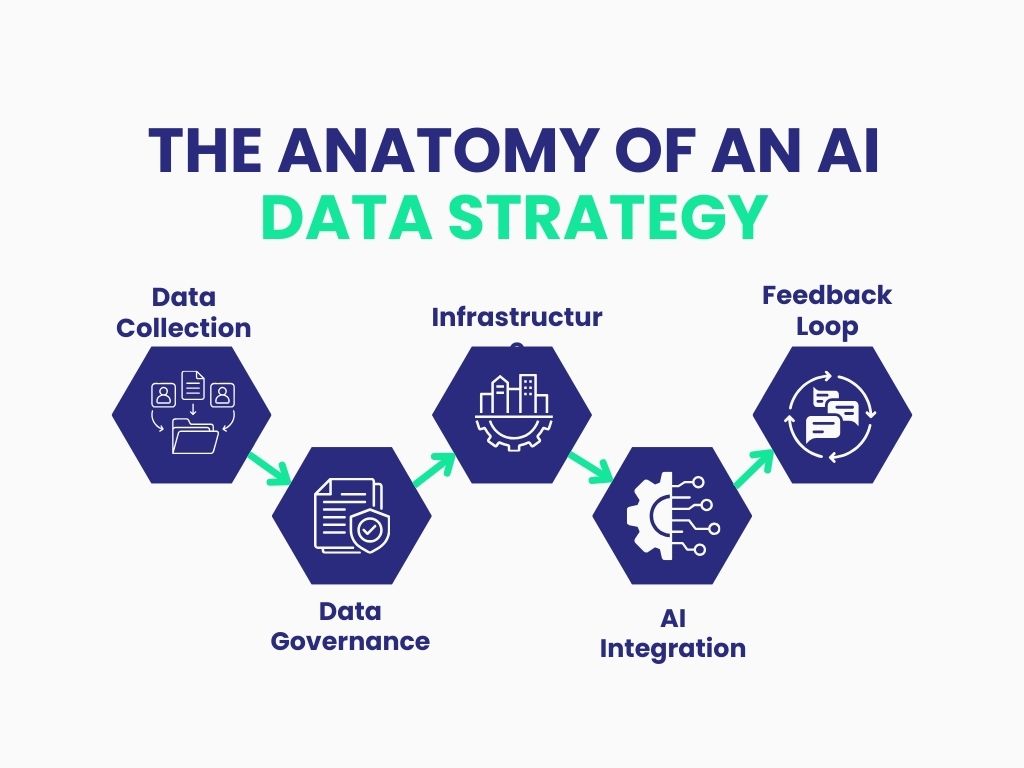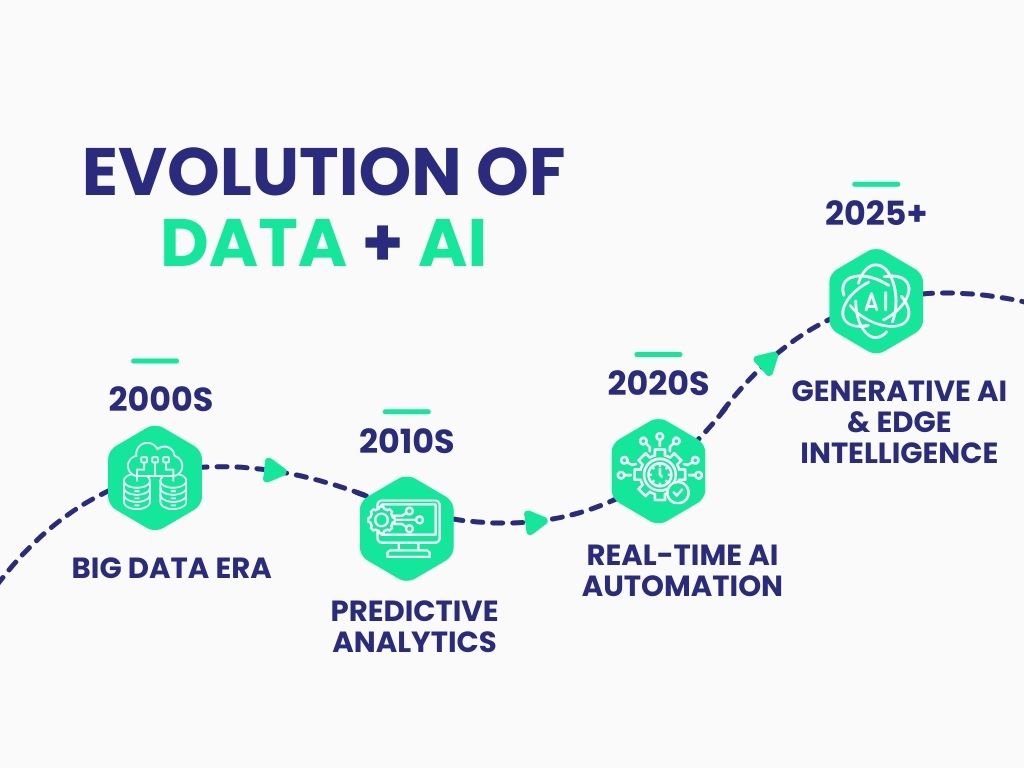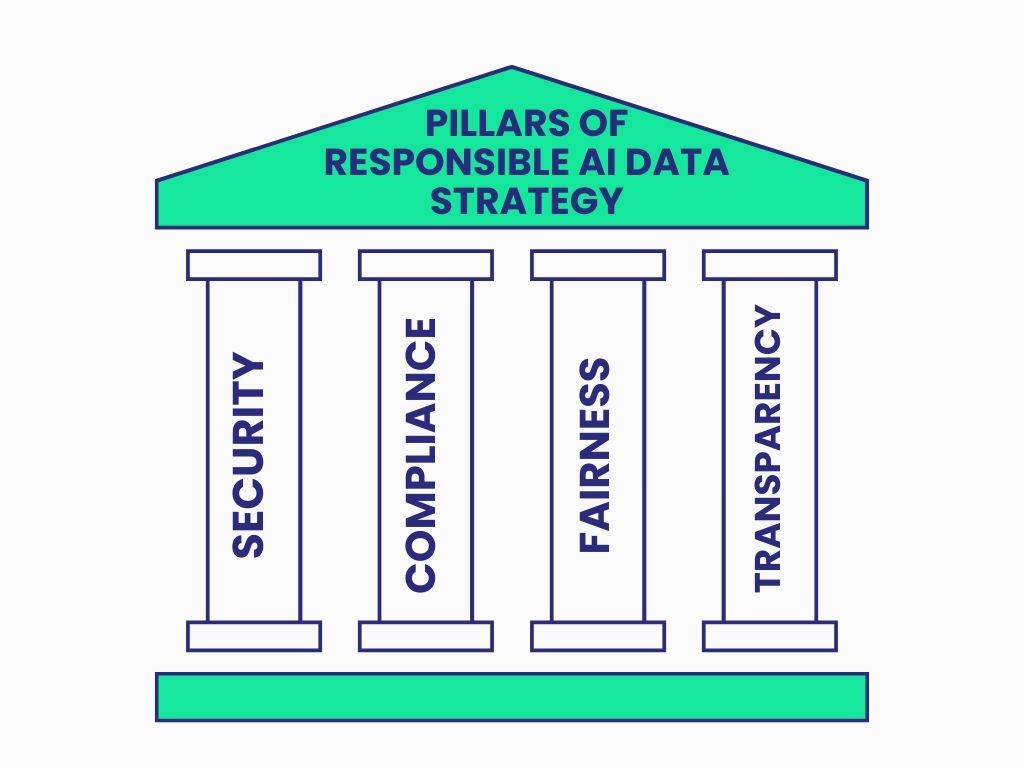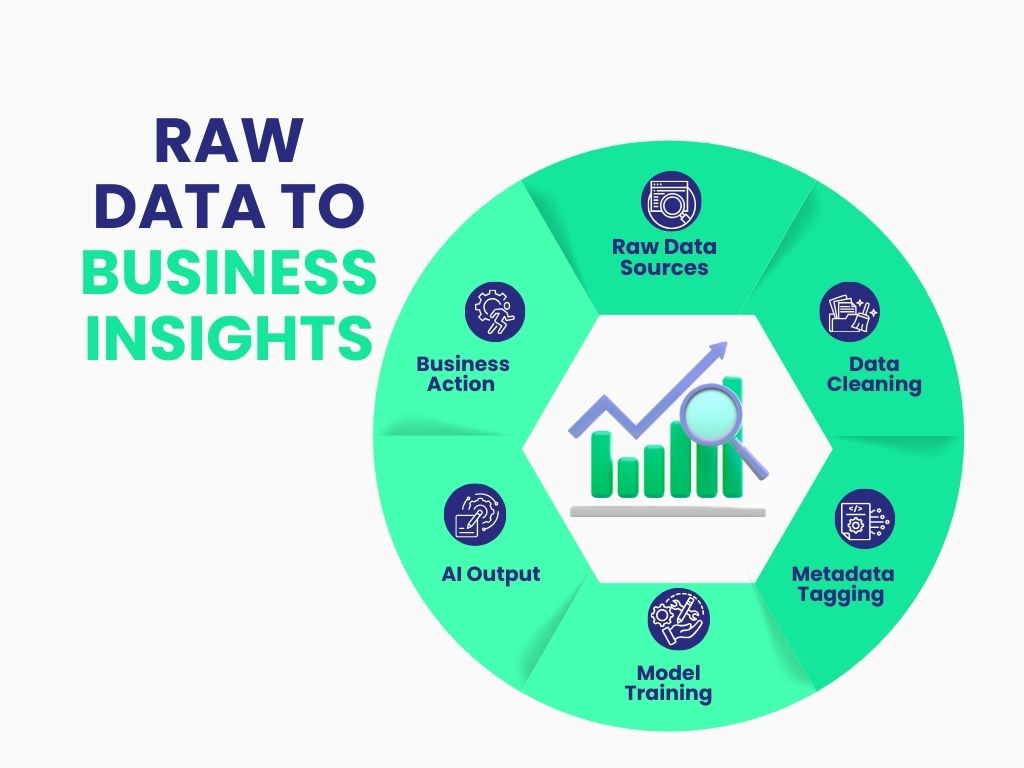Let’s face it—data is everywhere. But having tons of data doesn’t mean you’re using it well. In fact, many businesses sit on mountains of valuable information but struggle to turn it into real results. That’s where a solid AI data strategy comes in.
Think of your data strategy as a GPS system for your AI initiatives. It keeps you focused, avoids detours, and gets you where you want to go faster. Without it, your AI investments can stall, misfire, or worse, lead you in the wrong direction.
Whether you’re just starting your AI journey or looking to scale existing efforts, the secret to success lies in how you manage, structure, and activate your data. This guide will walk you through what an AI data strategy really means and how you can create one that drives smart decisions, boosts innovation, and unlocks measurable growth.
What Is a Data Strategy And Why Should You Care?
At its core, a data strategy is your organization’s game plan for collecting, storing, sharing, and using data. Without it, your AI tools are like race cars running on low-grade fuel.
More than a buzzword, a good data strategy answers crucial questions: What data do we have? Where is it stored? Who can use it? Is it even trustworthy? Answering these questions lays the foundation for AI to deliver real value.
When AI enters the picture, your data strategy needs to level up. We’re talking about:
- Managing data across departments so it flows freely—not stuck in silos.
- Making sure your data is high-quality and well-organized.
- Ensuring your team uses data responsibly and ethically.
- Establishing clear data ownership, accountability, and stewardship roles.
- Auditing data regularly to improve trust and transparency across systems.
With the right data strategy, AI becomes more than a tool—it becomes a competitive edge that guides decisions, sharpens predictions, and fuels transformation.
How Data and AI Have Evolved Together
Remember when businesses were obsessed with collecting “big data”? We’ve moved on. Now it’s about turning that data into actionable intelligence using AI.
Here’s how the data-AI relationship has matured:
- Descriptive to Predictive: We’ve gone from simply understanding what happened to forecasting what’s next.
- Insights to Automation: AI now powers dynamic systems that learn and act on their own.
- Centralized to Distributed: With the rise of edge computing and IoT, data is now created and processed everywhere.
But it’s more than just a technology shift—it’s a mindset change. Businesses must now embrace:
- A culture of continuous learning where models are retrained and redeployed in real time.
- Integration of AI with core operational processes, not just analytics.
- Collaboration between data scientists, engineers, and domain experts to co-create intelligence.
This evolution enables proactive decision-making and intelligent automation—but only if your data ecosystem is built for it.
The Building Blocks of a Great AI Data Strategy
Creating a smart data strategy doesn’t require magic—it requires method. Here’s a deeper look at what you need:
-
Know What You’re Solving
Don’t chase AI trends. Focus on the problems that matter most to your business. Prioritize use cases where AI can drive real, measurable impact—like reducing churn, improving forecast accuracy, or automating repetitive tasks.
-
Organize Your Data (Yes, All of It)
Think of your data ecosystem as a library. It only works if everything is cataloged, accessible, and up to date. Invest in data integration tools, ETL processes, and semantic layers to unify fragmented sources into a usable whole.
-
Make Data Secure and Compliant
Beyond ticking boxes, compliance builds trust. Implement identity management, audit trails, and automated alerts. Proactively adapt to regulations and educate internal teams on best practices in data ethics and privacy.
-
Build Infrastructure That Grows With You
Your tech stack should evolve with your needs. Use modular architecture, APIs, and elastic computing. Favor cloud-native services that offer flexibility, failover support, and analytics-ready storage.
-
Empower Your People
Democratize data. Equip teams with intuitive tools and easy-to-digest dashboards. Promote citizen data scientists and embed data champions across departments to bridge technical and business knowledge.
-
Track Progress (And Keep Tweaking)
Establish KPIs across technical, operational, and business dimensions. Use experimentation frameworks (like A/B testing) to validate new AI applications. Treat every insight as a hypothesis to refine and scale.
Advanced Tips for Next-Level AI Data Strategy
Once your foundation is strong, explore the frontier:
- Federated Learning: Allows organizations to collaborate on AI models without exposing sensitive data. Great for highly regulated sectors like banking or healthcare.
- Synthetic Data: Especially useful in edge cases or when training data is limited. Simulated datasets can augment AI training while protecting privacy.
- AI Security: Safeguard your models from data poisoning, drift, or leakage. Develop adversarial testing protocols and integrate with security monitoring tools.
- Data Monetization: Package and sell data insights through APIs, or offer anonymized benchmarking reports for external clients or partners.
These strategies help you push the envelope while remaining resilient and responsible.
Don’t Skip Metadata and Data Lineage
Metadata is more than a label—it’s your AI’s map. It tells models where the data came from, what it means, and how to use it.
With strong metadata and lineage:
- Analysts can trust that they’re working with the right version of the data.
- Engineers can debug AI outputs faster.
- Compliance teams can produce audits on demand.
Invest in tools that automate metadata capture, maintain version history, and visualize lineage across systems. It’s the glue that holds your AI data ecosystem together.
From Idea to Impact: Making AI Work in the Real World
Getting from “cool prototype” to “enterprise-wide rollout” takes more than just technology. You need structure:
- MLOps: Standardize and streamline the model lifecycle—training, testing, deployment, monitoring, and retraining.
- Human-in-the-Loop Systems: Involve subject matter experts in validating predictions and flagging anomalies.
- Documentation & Playbooks: Turn every AI model into a repeatable business process.
- Scalability Plans: Think beyond MVP. Plan infrastructure and staffing for full adoption.
Remember, AI isn’t a side project—it should become part of your operational DNA.
Measuring Success: How Do You Know It’s Working?
Metrics matter—but choose the right ones. Evaluate across three levels.
- Model Performance: Accuracy, recall, precision, F1 score, and error rate.
- Business Value: Increase in revenue, cost savings, customer engagement, churn reduction.
- Operational Efficiency: Time saved, automation success rate, decrease in manual reviews.
Also gather qualitative input—are teams confident using the insights? Are workflows actually changing? That’s how you know your AI data strategy is making an impact.
A Real-World Example: Retail Reinvented
Let’s revisit that retail company. They weren’t just guessing what to stock—they combined store traffic data, seasonal trends, marketing campaigns, and even weather forecasts into a predictive AI model.
What they achieved:
- Reduced spoilage by 22%
- Increased basket size through better in-store product placement
- Enabled regional teams to make faster restocking decisions
By grounding their strategy in business needs and building the right data infrastructure, they turned insights into measurable results.
Avoid These Common Mistakes
- Data hoarding – More data isn’t always better. Focus on relevance.
- Governance gaps – Without guardrails, AI initiatives can become chaotic.
- Shiny tool syndrome – Buying tools without a strategy wastes time and money.
- Talent mismatch – Don’t expect one data scientist to do everything. Build diverse, complementary teams.
- Ignoring organizational change – If your people aren’t ready, your strategy will stall.
Avoiding these pitfalls is just as important as getting the strategy right.
How SymuFolk Can Help
We know this journey isn’t easy—and it’s not meant to be taken alone. At SymuFolk, we roll up our sleeves and work alongside your team to:
- Set clear, realistic goals for AI and data
- Design architecture that’s scalable and sustainable
- Train your staff for long-term independence
- Ensure ethical, transparent use of data
- Build trust across your organization by aligning AI efforts with business needs
We’re not just consultants—we’re your long-term partners in data strategy and AI innovation.
Final Thoughts: It’s Time to Take the Lead
Your data holds more potential than you think—but only if you treat it like the strategic asset it is. A smart AI data strategy helps you unlock that potential, one use case at a time.
Start small. Stay curious. Iterate quickly. And always lead with purpose.
Need a partner to help you get there? SymuFolk is here for every step of your AI journey.
Frequently Asked Questions (FAQs)
1. What is an AI data strategy, in simple terms?
An AI data strategy is your business’s plan for organizing, managing, and using data in a way that supports artificial intelligence tools. It’s the foundation that makes sure your AI gets the right data, at the right time, in the right format.
2. How is a data strategy different when AI is involved?
Traditional data strategies focus on storage and access. An AI data strategy goes further—it ensures the data is clean, connected, secure, and structured in a way that AI models can learn from. It also includes ethics, compliance, and continuous optimization.
3. Do small businesses need an AI data strategy?
Absolutely. Even if you’re not using advanced AI today, setting up a solid data foundation will save time, reduce costs, and make future adoption easier. Start small—focus on the data that matters most to your goals.
4. How do I know if my data is ready for AI?
Check for consistency, completeness, and structure. If your data is scattered across spreadsheets or outdated systems, or lacks context (metadata), it’s not ready yet. A data audit is a great first step.
5. What tools are commonly used in AI data strategy?
Popular tools include cloud platforms like AWS, Azure, or Google Cloud; data integration tools like Fivetran or Talend; AI/ML tools like DataRobot or SageMaker; and governance tools like Collibra or Alation










